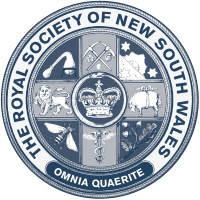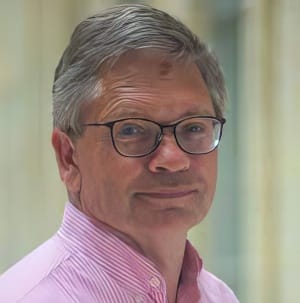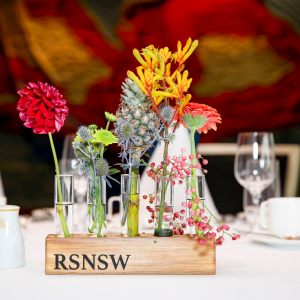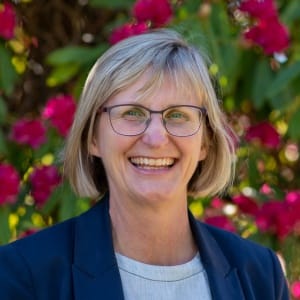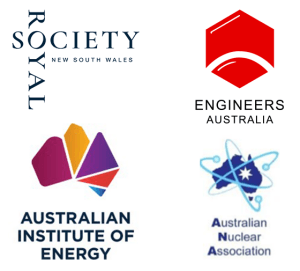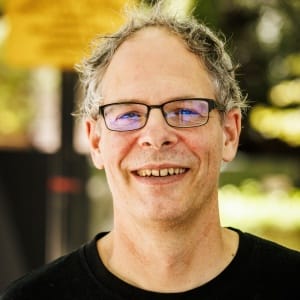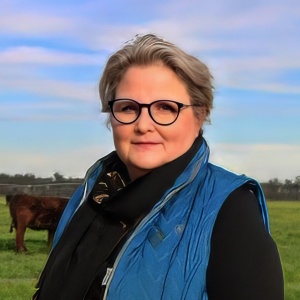1301st OGM and Open Lecture
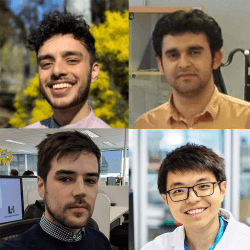
 Royal Society of NSW 2021 Student Award Presentations
Royal Society of NSW 2021 Student Award Presentations
Zain Mehdi, ANU
Sajad Abolpour Moshizi, Macquarie University
Harry Marquis, University of Sydney
Kevin Chau, Macquarie University
Date: Wednesday, 2 March 2022, 6.30 pm AEDT
Venue: Zoom Webinar.
Video presentation: YouTube video
The evening’s program comprises four short talks presented by PhD and Masters Research Candidates who have been awarded the Society’s Jak Kelly Award and the Royal Society of NSW Scholarships for 2021. Follow the links to read a summary of each presentation and a brief biography of the presenter.
Mx Zain Mehdi (Jak Kelly Award) — Bigger than atoms, smaller than cheese: probing the mesoscopic world with table-top experiments
Mr Sajad Abolpour Moshizi (Scholarship Winner) — Development of a biomimetic vestibular system with miniaturized sensors to restore balance
Mr Harry Marquis (Scholarship Winner) — Improved imaging for targeted radiation treatments in cancer patients
Mr Kevin Chau (Scholarship Winner) — Decoding the platelet glycoproteome
Presentation Summaries and Brief Biographies of the Presenters
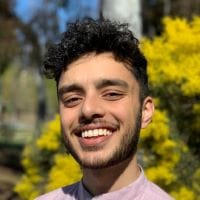 Bigger than atoms, smaller than cheese: probing the mesoscopic world with table-top experiments
Bigger than atoms, smaller than cheese: probing the mesoscopic world with table-top experiments
Mx Zain Mehdi, PhD Candidate, Australian National University
Over the course of the last century, modern physics has made tremendous strides in understanding the laws of nature at the smallest scales in the universe – called quantum physics. This has provided us with a strong understanding of the microscopic world of individual atoms, which seemingly obeys completely different laws than the macroscopic objects with which we interact in our day-to-day lives. However, we still currently lack a detailed understanding of the mesoscopic world — the intermediate scale between the microscopic and macroscopic.
Over the past few decades, ‘table-top experiments’ with ultracold atomic gases have emerged as an ideal playground for studying mesoscopic systems. However, the scale of systems that can be studied with these experiments is limited by the existing techniques used to cool the atoms. In this presentation, Zainb Mehdi will describe the main limitations of current experiments, and how they may be overcome using a new, proposed technique called feedback cooling.
Zain Mehdi completed their undergraduate degree in Theoretical Physics at the ANU, graduating with First Class Honours in 2019. Since then, Zain has been working on their PhD research investigating quantum physics in the mesoscopic regime — the intermediate scale between the microscopic world of individual atoms and the macroscopic world of classical objects. Their work involves theoretical investigations of exotic phenomena in cold atom systems, with two key focuses: developing new techniques for cooling atomic gases and understanding turbulent phenomena in superfluids.
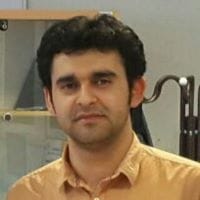 Development of a biomimetic vestibular system with miniaturized sensors to restore balance
Development of a biomimetic vestibular system with miniaturized sensors to restore balance
Mr Sajad Abolpour Moshizi, PhD Student, Macquarie University
This presentation will discuss the importance of the vestibular system in the balance of the body. Then, the pros and cons of the existing vestibular implants will be described. The main part of the presentation will introduce pioneering work in developing a biomimetic vestibular system using advanced materials, nanotechnology, and 3D printing technology. The research findings open up new avenues for the next generation of vestibular implants.
Sajad Abolpour Moshizi is a PhD candidate at Macquarie University. His work is focused on developing innovative synthetic vestibular systems to restore balance for patients with a balance disorder. Approximately 30% of the population suffers from vestibular dysfunction; therefore, new methods are urgently needed to help such patients. Sajad’s project will also help elderly people to manage the consequences of vestibular dysfunction, including dizziness, imbalance, and gaze instability while walking. He has developed several novel hair cell sensory systems using advanced materials and nanotechnology with high sensitivity, very low-frequency detection, and low response time. He has designed a biomimetic vestibular system equipped with the hair cell sensor using 3D printing technology. This research paves the way for developing the next generation of vestibular implants, with the ultimate goal of restoring balance dysfunction. The research findings have been published in prestigious journals such as Nano-Micro Letters, ACS Applied Materials & Interfaces, and Advanced Materials Technologies.
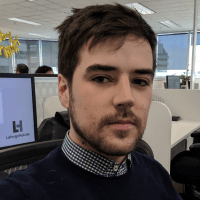 Improved imaging for targeted radiation treatments in cancer patients
Improved imaging for targeted radiation treatments in cancer patients
Mr Harry Marquis, PhD Student, University of Sydney
The presentation will describe a novel approach to imaging that utilises different imaging modalities (PET and SPECT) to improve the functional SPECT image which helps to better define the amount of radiation required to treat widespread, disseminated cancer.
Harry Marquis is a PhD candidate in the School of Physics at the University of Sydney. His clinical translational research is based at the Royal North Shore Hospital. Harry’s research project focuses on improving imaging-based dosimetry estimates in radionuclide therapy (known as “PRRT”) for the treatment of patients with pancreatic and neuroendocrine cancer. Harry’s research has received international recognition from the Society of Nuclear Medicine and Molecular Imaging for outstanding original work in radiation safety and dosimetry. Harry has recently accepted a post-doctoral training position in Medical Physics at New York’s Memorial Sloan Kettering Cancer Center commencing later this year.
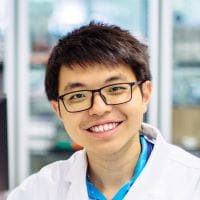 Decoding the platelet glycoproteome
Decoding the platelet glycoproteome
Mr Kevin Chau, MRes Student, Macquarie University
Platelets are important blood cells that play central roles in the vascular and immune systems, including in haemostasis, thrombosis, inflammation, host defence, and carcinogenesis. Tissue injury promptly activates platelets, triggering profound molecular changes including the release of pre-packaged proteins which mediate injury-related response processes outside the platelets. Whilst previous studies have documented the importance of glycosylation of these mobile proteins in platelet biology, the entire complement of glycoproteins (“the glycoproteome”) in platelets remains poorly defined leaving a critical knowledge gap that hinders a more complete understanding of the biological roles that complex carbohydrates.
play in platelet function.
In this presentation, I will discuss how I used advanced mass spectrometry and innovative glycoproteomics and glycomics technologies to decode for the first time the immensely complex glycoproteome of resting and activated platelets. The unbiased high-definition map of the platelet glycoproteome arising from these efforts will serve as a useful resource for future studies of platelet glycobiology and diseases involving platelets including COVID-19 vaccine-induced thrombotic thrombocytopenia.
The Huong (Kevin) Chau obtained his Bachelor of Advanced Science degree from Macquarie University in 2019 majoring in Chemistry and Neuroscience. He received several awards and prizes for his undergraduate performance including being shortlisted as the top 1% of high-achieving students in 2018, was awarded the Le Fevre Memorial Prize for proficiency in Physical Chemistry in 2019, and was awarded a prestigious Australian AMGEN scholarship in 2020. He is currently a Master of Research student at Macquarie University under the supervision of Associate Professor ARC Future Fellow Morten Andersen, where he passionately explores the glycobiology of platelets using advanced mass spectrometry.
